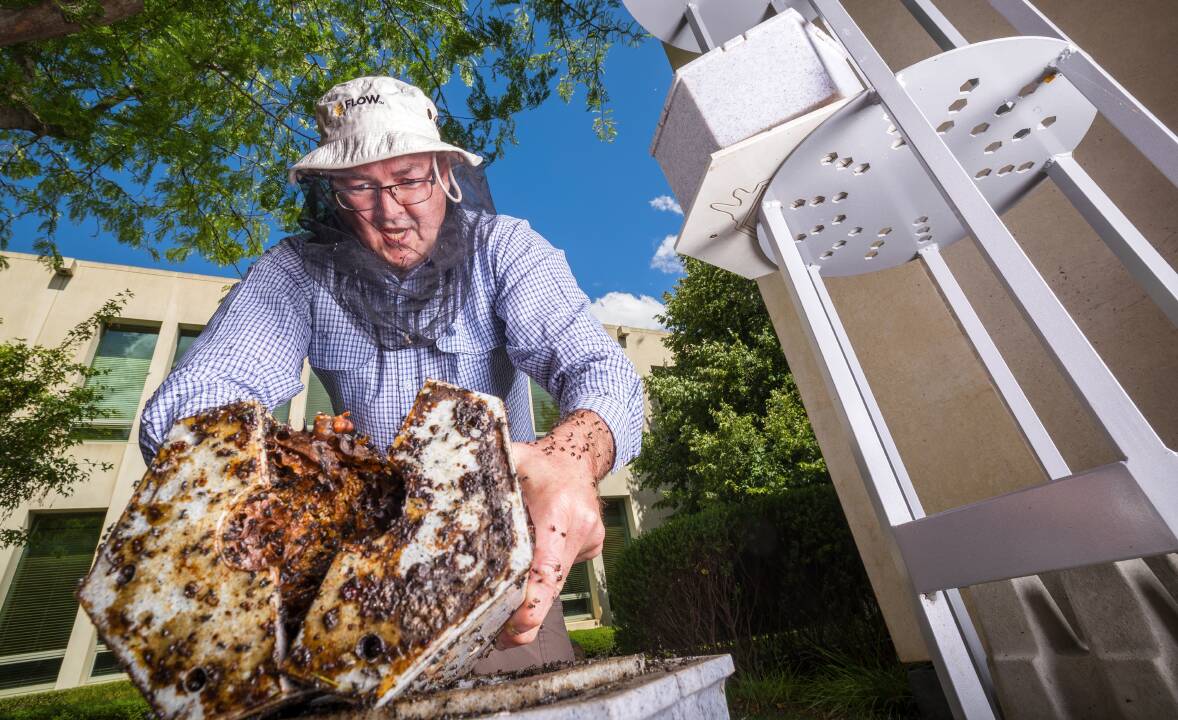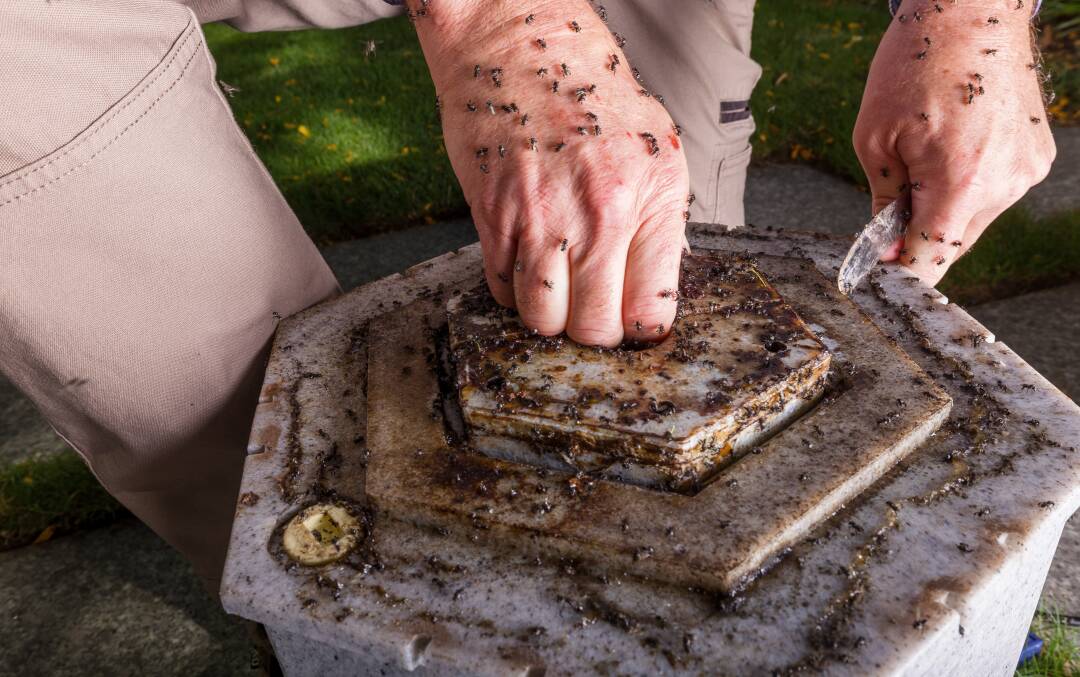
Harvesting honey from the Parliament House hives is an altogether different proposition when the bees are native rather than honey bees.
Volunteer beekeeper on the hill, Cormac Farrell, yesterday extracted honey from the two native bee hives at Parliament House, which are in the courtyard gardens.
The native bees are sting-less bees so there was no need for smoke and suits as he opened the hive, another thing which was unexpected.
Not a rustic white box, these hives are instead 3D-printed ones, made from recycled plastic.
The honey from the native bees is also runnier and not as high in sugar, which makes it better for diabetics.
A public servant in his day job, Mr Farrell is happy to tend to the hives at Parliament House when needed.
"We're all volunteers here. We all do it in our spare time, as a bit of fun," he said.
"And also to showcase these gardens which help produce the honey."
It's now eight years since three bee hives were placed in the gardens of Parliament House in Canberra.
There are now six hives - four for honey bees and two for native bees.
Mr Farrell said the hives produced between 30 and 100 kilograms of honey a year, much of which was used in the kitchens of Parliament House to serve at official dinners.
The honey was also used in mead and to make honey vodka, which was sold in the Parliament House shop.

In good years, there might be enough honey to produce small jars to sell to the public.
"Though they sell out crazy fast," Mr Farrell said. "I think they last a day."
Mr Farrell was accompanied by workers from engineering firm Aurecon, which donated the original hives; Parliament House happily taking them to promote bees and their role in food security.
The native bees, meanwhile, look more like flying ants and while they don't sting, they are protective of their patch.
Mr Farrell, who wore a veiled hat just to be sure, said the native bees would bite and lock down on an intruding insect who entered the hive- and then pull it apart.
"Brutal, but very, very effective," he said.
Not at all Parliament House-ish.







